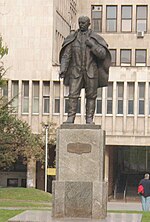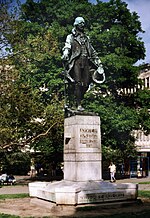Museum of Theatrical Arts of Serbia
1950 establishments in SerbiaCultural Heritage of Serbia stubsMuseums established in 1950Museums in BelgradeSerbia stubs

The Museum of Theatrical Arts of Serbia (Serbian Cyrillic: Музеј позоришне уметности Србије) is a museum located in Belgrade, the capital of Serbia. The museum also contains a library and a historical archive. The library contains pieces of Scenography, along with historical pictures and paintings.
Excerpt from the Wikipedia article Museum of Theatrical Arts of Serbia (License: CC BY-SA 3.0, Authors, Images).Museum of Theatrical Arts of Serbia
Gospodar Jevremova, Belgrade Old Town (Stari Grad Urban Municipality)
Geographical coordinates (GPS) Address Phone number Website Nearby Places Show on map
Geographical coordinates (GPS)
| Latitude | Longitude |
|---|---|
| N 44.821388888889 ° | E 20.458611111111 ° |
Address
Божићева кућа у Београду
Gospodar Jevremova 19
11000 Belgrade, Old Town (Stari Grad Urban Municipality)
Central Serbia, Serbia
Open on Google Maps











